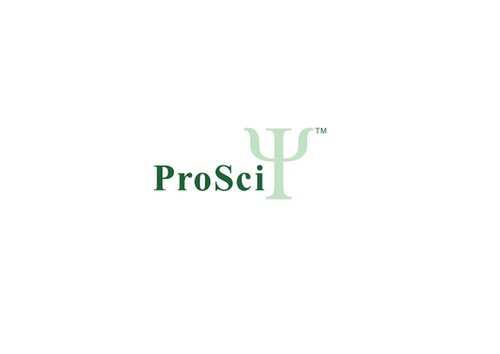Product Description
SARS-CoV-2 (COVID-19) Envelope Antibody | 9169 | ProSci
Host: Rabbit
Reactivity: Virus
Homology: Predicted reactivity based on immunogen sequence: SARS-CoV Envelope proteins: (93%)
Immunogen: Anti-SARS-CoV-2 (COVID-19) Envelope antibody (9169) was raised against a peptide corresponding to 14 amino acids near the carboxyl terminus of SARS-CoV-2 (COVID-19) Envelope protein.
The immunogen is located within the last 50 amino acids of SARS-CoV-2 (COVID-19) Envelope protein.
Research Area: Infectious Disease, COVID-19
Tested Application: E, WB, IHC
Application: IHC: 0.5 μg/mL; WB: 1-2 μg/mL;
Antibody validated: Immunohistochemistry in human samples. SARS-CoV-2 (COVID-19) Envelope antibody can detect 2 ng of free peptide at 1 μg/mL in ELISA. It can detect SARS-CoV-2 Envelope recombinant protein by ELISA and WB. All other applications and species not yet tested.
Specificiy: N/A
Positive Control 1: N/A
Positive Control 2: N/A
Positive Control 3: N/A
Positive Control 4: N/A
Positive Control 5: N/A
Positive Control 6: N/A
Molecular Weight: N/A
Validation: N/A
Isoform: N/A
Purification: SARS-CoV-2 (COVID-19) Envelope Antibody is affinity chromatography purified via peptide column.
Clonality: Polyclonal
Clone: N/A
Isotype: IgG
Conjugate: Unconjugated
Physical State: Liquid
Buffer: SARS-CoV-2 (COVID-19) Envelope Antibody is supplied in PBS containing 0.02% sodium azide.
Concentration: 1 mg/mL
Storage Condition: SARS-CoV-2 (COVID-19) Envelope antibody can be stored at 4 ˚ C for three months and -20 ˚ C, stable for up to one year. As with all antibodies care should be taken to avoid repeated freeze thaw cycles. Antibodies should not be exposed to prolonged high temperatures.
Alternate Name: SARS-CoV-2 (COVID-19, 2019-nCoV) Envelope Antibody: Severe acute respiratory syndrome coronavirus 2 (SARS-CoV-2) , Envelope protein, E protein
User Note: Optimal dilutions for each application to be determined by the researcher.
BACKGROUND: Coronavirus disease 2019 (COVID-19) , formerly known as 2019-nCoV acute respiratory disease, is an infectious disease caused by SARS-CoV-2, a virus closely related to the SARS virus (1) . The disease is the cause of the 2019–20 coronavirus outbreak (2) . The structure of 2019-nCoV consists of the following: a spike protein (S) , hemagglutinin-esterease dimer (HE) , a membrane glycoprotein (M) , an envelope protein (E) a nucleoclapid protein (N) and RNA. The envelope protein is a small polypeptide that contains at least one α-helical transmembrane domain. It involves in several aspects of the virus's life cycle, such as assembly, budding, envelope formation, and pathogenesis. E protein has membrane permeabilizing activity, which provides a possible rationale to inhibit in vitro ion channel activity of some synthetic corona virus E proteins, and also viral replication (3) .
 Euro
Euro
 USD
USD
 British Pound
British Pound
 NULL
NULL
















